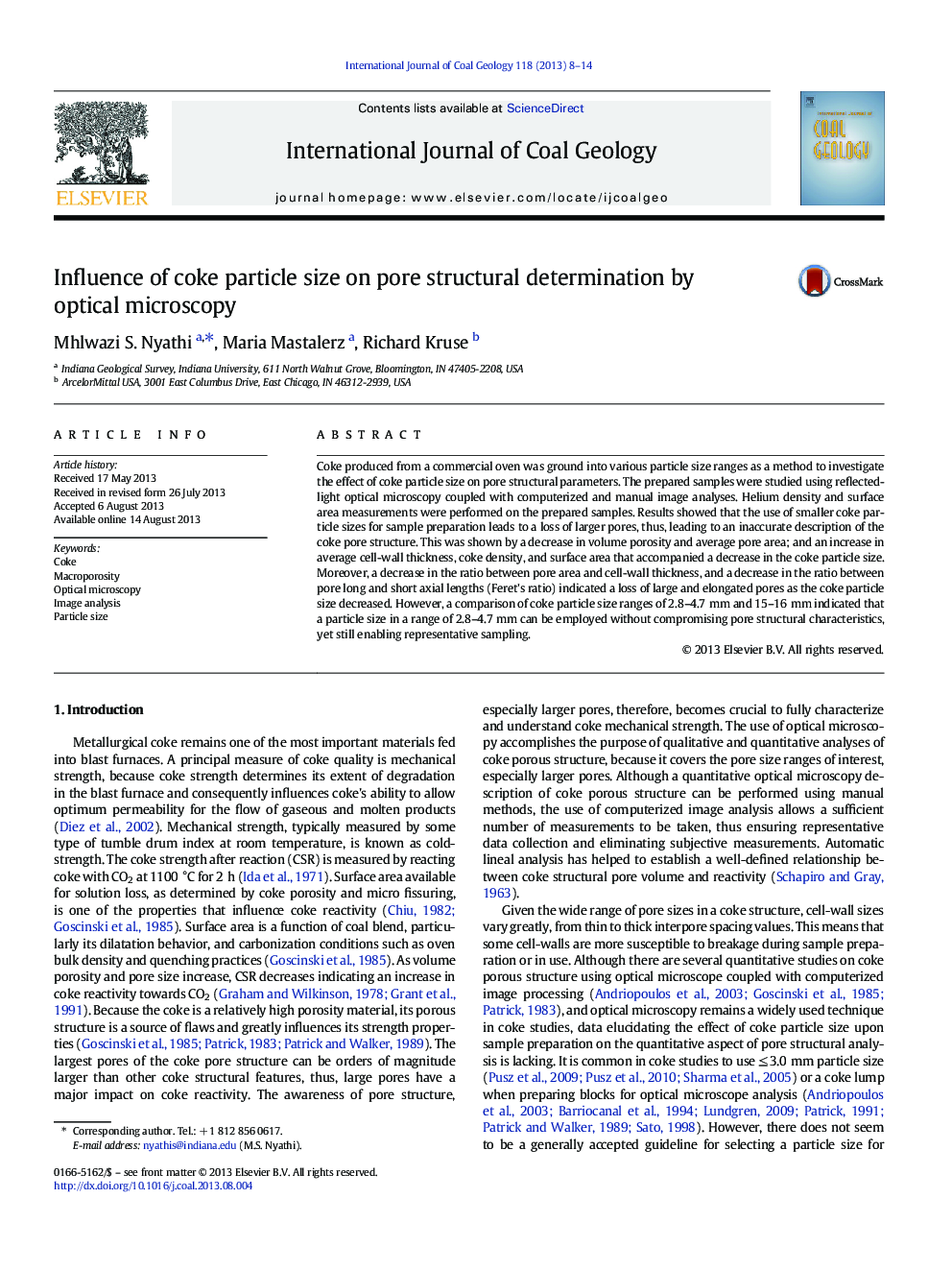| Article ID | Journal | Published Year | Pages | File Type |
|---|---|---|---|---|
| 1753329 | International Journal of Coal Geology | 2013 | 7 Pages |
•Using a finer coke particle size for sample preparation leads to large pores loss.•Compared to circular, elongated pores are more likely to be lost during crushing.•To retain pore structural quality, particle size range of 2.8–4.7 mm can be used.
Coke produced from a commercial oven was ground into various particle size ranges as a method to investigate the effect of coke particle size on pore structural parameters. The prepared samples were studied using reflected-light optical microscopy coupled with computerized and manual image analyses. Helium density and surface area measurements were performed on the prepared samples. Results showed that the use of smaller coke particle sizes for sample preparation leads to a loss of larger pores, thus, leading to an inaccurate description of the coke pore structure. This was shown by a decrease in volume porosity and average pore area; and an increase in average cell-wall thickness, coke density, and surface area that accompanied a decrease in the coke particle size. Moreover, a decrease in the ratio between pore area and cell-wall thickness, and a decrease in the ratio between pore long and short axial lengths (Feret's ratio) indicated a loss of large and elongated pores as the coke particle size decreased. However, a comparison of coke particle size ranges of 2.8–4.7 mm and 15–16 mm indicated that a particle size in a range of 2.8–4.7 mm can be employed without compromising pore structural characteristics, yet still enabling representative sampling.
